You’ll transform your jewelry design approach because modern consumers demand personalized, ethically sourced pieces that traditional methods can’t efficiently deliver. With 80% of buyers preferring custom designs and lab-grown diamonds capturing 15% of the market, technology-driven approaches using CAD, 3D printing, and AI optimization provide the precision, sustainability, and customization that drive sales growth. Businesses embracing these innovative methods gain competitive advantages through reduced waste, faster prototyping, and enhanced customer satisfaction that positions them for long-term success.
The Evolution of Modern Jewelry Design Principles
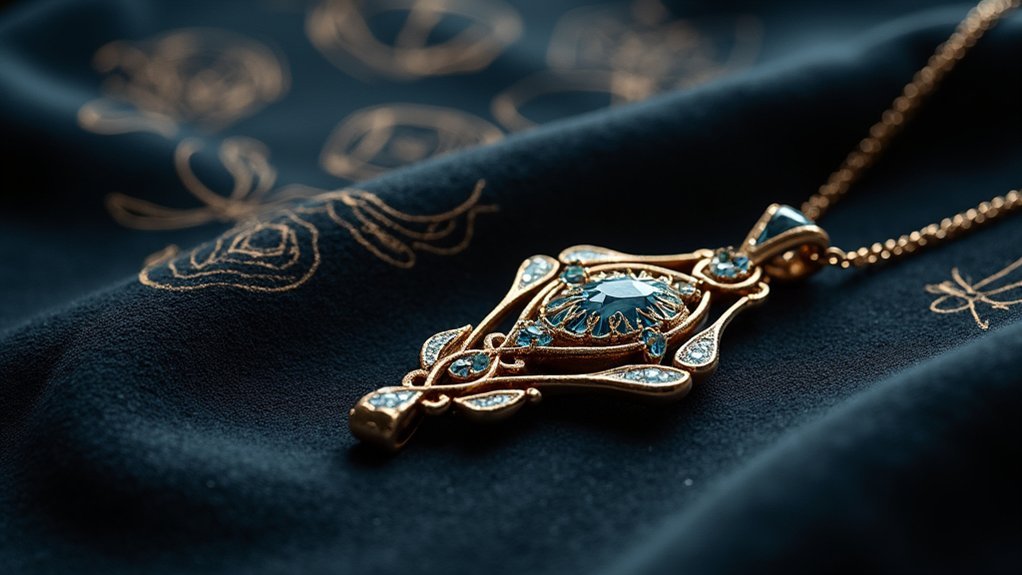
While traditional jewelry making relied heavily on craftsmanship intuition, today’s modern jewelry design principles have transformed into a systematic approach that prioritizes balance, proportion, contrast, unity, and harmony.
You’ll find that this evolution empowers you to create visually compelling pieces that reflect personal style while maintaining professional standards.
CAD technology now gives you microscopic precision in your design process, enabling intricate patterns impossible with traditional methods.
You can leverage 3D printing for rapid prototyping and efficient customization, revolutionizing how you approach custom jewelry design.
Contemporary trends encourage you to mix metals and incorporate personalized elements, making each piece uniquely meaningful.
This systematic approach to modern jewelry guarantees your unique designs resonate emotionally while meeting today’s aesthetic expectations.
Technology’s Impact on Contemporary Jewelry Creation
As technology reshapes every aspect of creative industries, jewelry design has undergone perhaps its most dramatic transformation in centuries. You’ll find that 3D printing and CAD software enable intricate custom design possibilities previously impossible with traditional methods. These innovations allow you to create highly personalized jewelry pieces that reflect your personal taste with unprecedented precision.
| Technology | Impact | Customer Benefit |
|---|---|---|
| VR/AR | Real-world visualization | Enhanced confidence |
| AI Analysis | Diamond selection optimization | Perfect 4Cs matching |
| Blockchain | Supply chain tracking | Ethical practices verification |
| Digital Tools | Rapid modifications | Active design participation |
You’re now empowered to participate directly in the design process, making quick adjustments while ensuring ethical practices through transparent sourcing. Technology transforms jewelry creation from a static process into an interactive, sustainable experience.
Sustainable Practices in Today’s Jewelry Industry
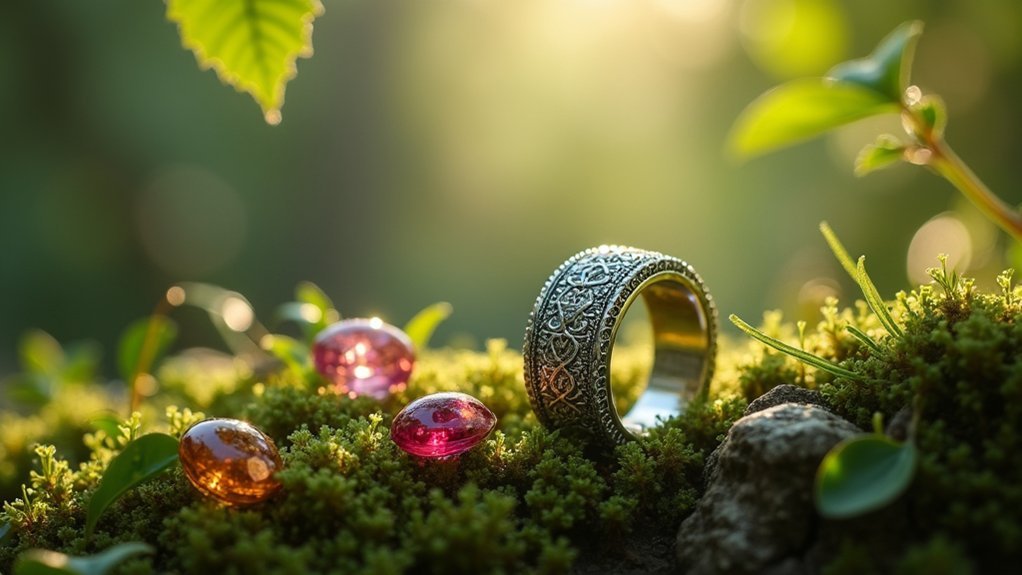
Beyond technological innovation, modern jewelry creation now centers on environmental responsibility and ethical sourcing practices that reshape how you approach luxury purchases.
Today’s sustainable practices address growing consumer demand, with over 70% preferring ethically sourced materials over traditional alternatives.
You’ll find lab-grown diamonds leading this transformation, capturing 15% of the global market while delivering identical beauty without environmental damage.
Recycled metals now comprise up to 80% of many brands’ materials, dramatically reducing mining requirements.
CAD technology and 3D printing optimize your design process, minimizing waste through precise material calculations.
Blockchain technology provides complete transparency, letting you trace your jewelry’s journey from source to showcase.
These innovations prove you don’t sacrifice luxury for conscience—you enhance it.
Customer Expectations for Personalized Jewelry Experiences
Today’s jewelry buyers don’t just want accessories—they demand pieces that tell their personal stories, with 80% preferring custom designs over mass-produced alternatives that flood the market. Your customers expect meaningful connections, with 70% valuing emotional significance in their custom pieces, especially for engagement rings and anniversary gifts.
| Customer Expectation | Market Impact |
|---|---|
| Unique design choices | 25% sales increase |
| Technology integration | Real-time modifications |
| Social media inspiration | 60% seek bespoke options |
| Personal storytelling | Emotional connection priority |
| Custom experiences | Designer collaboration demands |
Social media platforms showcase personalized trends, inspiring buyers to seek unique expressions of their individuality. As a jewelry designer, you must embrace 3D printing and CAD software to meet these evolving expectations, offering real-time visualizations that transform how customers engage with the creative process.
Competitive Advantages of Innovative Design Methods
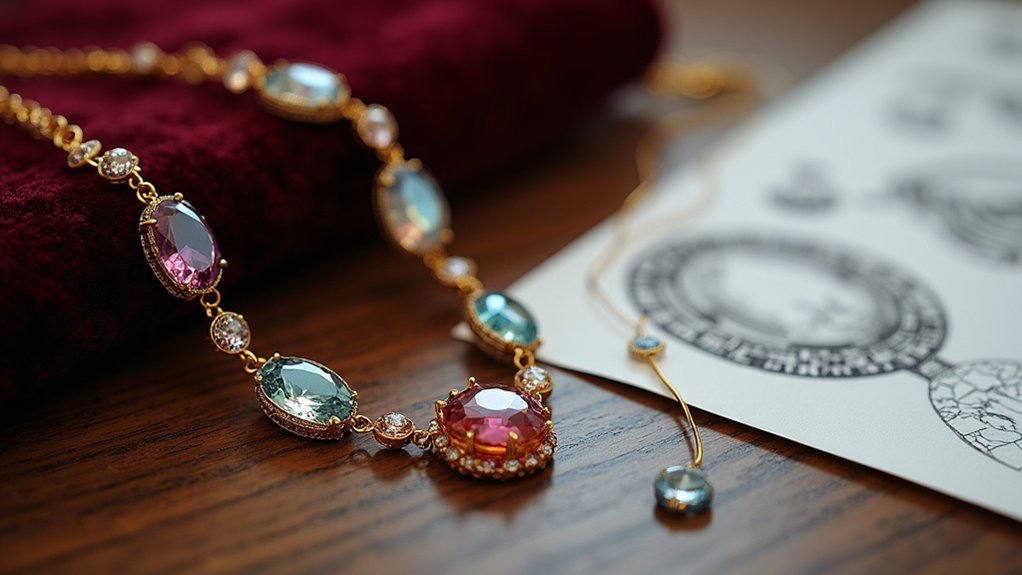
While traditional jewelry design methods constrain creativity and slow production timelines, innovative design methods like 3D printing and CAD technology give you distinct competitive advantages that transform how you operate in today’s market.
Rapid prototyping enables quick iterations and adjustments, streamlining your entire production process compared to the traditional approach.
Advanced design software enhances precision, allowing you to create intricate custom pieces with unprecedented detail.
AI-driven diamond selection tools optimize customization by analyzing thousands of options based on individual preferences, ensuring superior customer satisfaction.
You’ll also benefit from sustainable practices like lab-grown diamonds and blockchain tracking, appealing to eco-conscious consumers while promoting ethical sourcing.
These innovative design methods enable you to create unique personalized pieces that resonate with individual styles, increasing customer loyalty in jewelry making.
Cost-Effectiveness of Digital Design Tools
Although traditional jewelry design methods drain budgets through expensive materials and lengthy revision cycles, digital design tools slash your operational costs by eliminating physical prototypes and reducing material waste. CAD software delivers precise measurements and intricate details, preventing costly production errors that traditionally required expensive revisions.
| Cost Factor | Traditional Method | Digital Design Tools |
|---|---|---|
| Prototyping | Multiple physical samples | Virtual iterations |
| Material Usage | Over-purchasing common | Optimized calculations |
| Revision Cycles | Expensive rework | Quick modifications |
| Collaboration Time | Extended communication | Streamlined feedback |
| Error Reduction | Manual measurement risks | Precise CAD accuracy |
3D printing technology accelerates your prototyping process, creating multiple iterations at fraction costs. You’ll optimize material usage through advanced modeling techniques while facilitating seamless client collaboration. This cost-effectiveness transforms jewelry design economics fundamentally.
Quality Enhancement Through Advanced Manufacturing Techniques
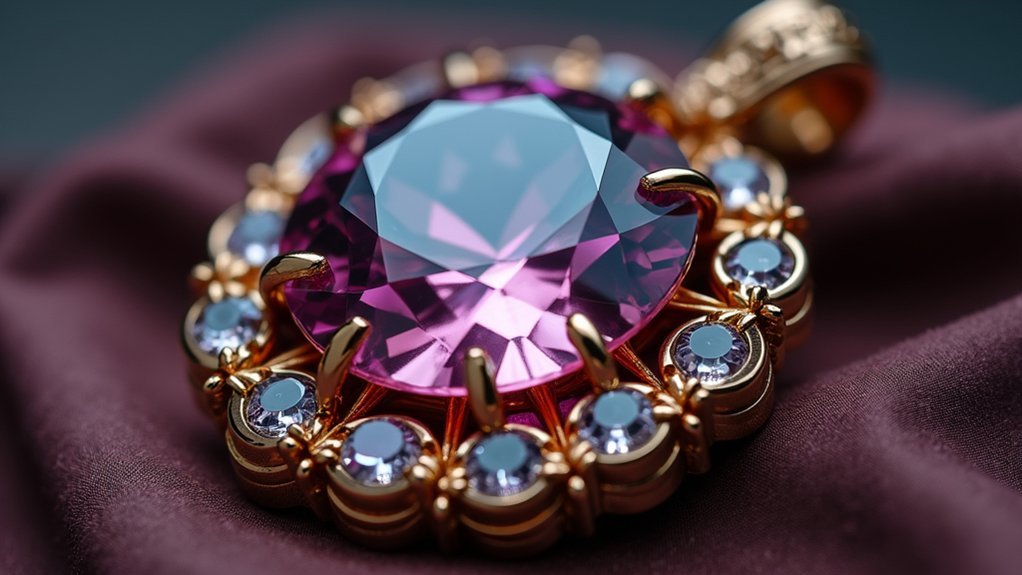
When you implement advanced manufacturing techniques, your jewelry designs achieve unprecedented levels of precision and complexity that traditional methods simply can’t match.
3D printing enables you to create intricate custom jewelry pieces with details that traditional manufacturing can’t produce. CAD design tools provide microscopic accuracy, ensuring perfect gemstone fits and superior craftsmanship in every jewelry piece.
Advanced prototyping and production methods let you create physical models rapidly, gathering immediate customer feedback for real-time adjustments. This enhances quality and satisfaction markedly.
Direct metal laser sintering fabricates complex metal structures that surpass conventional casting in durability and finish quality. AI integration optimizes diamond selection by identifying the best stones based on precise criteria, ensuring only premium materials make it into your custom designs.
Market Demands for Unique and Custom Pieces
These sophisticated manufacturing capabilities perfectly position you to meet the explosive market demand for unique and custom jewelry pieces.
You’ll tap into a market growing 20% annually, where 67% of consumers prioritize personalized designs that align with their personal style and values. Your skilled jewelers can create meaningful pieces for personal milestones, especially targeting Millennials and Gen Z consumers who drive 55% of custom jewelry interest.
Millennials and Gen Z fuel 55% of custom jewelry demand in a market expanding 20% annually through personalized, values-driven designs.
Once your design is finalized, you’ll deliver authentic self-expression that mass-produced items can’t match.
From custom engagement rings to commemorative unique pieces, you’re positioned to capture customers seeking emotional significance and craftsmanship.
E-commerce and social media amplify your reach, making personalized jewelry more discoverable than ever before.
Future-Proofing Your Jewelry Design Business
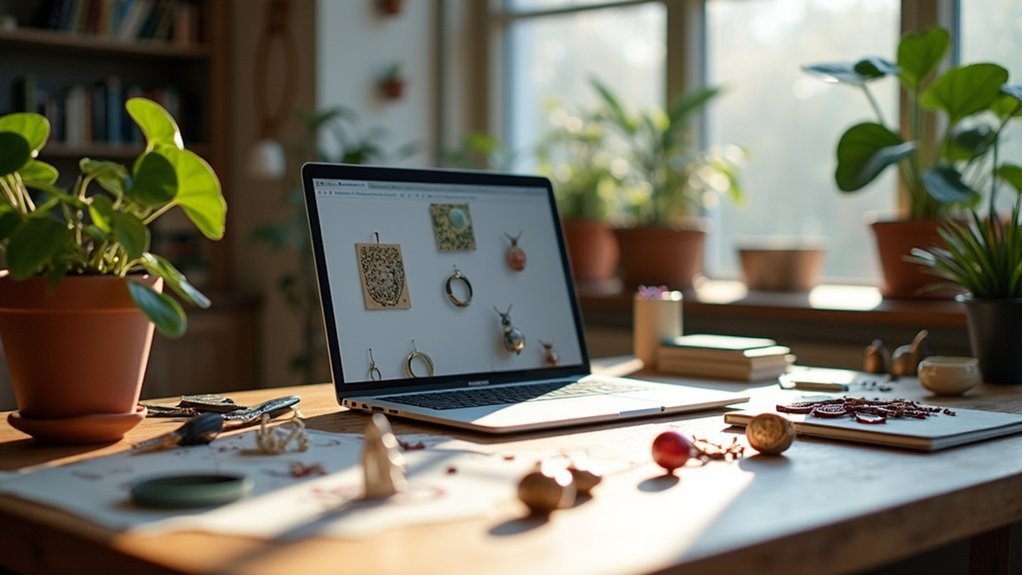
You’ll need to embrace digital design tools like CAD and 3D printing to enhance precision and streamline production while meeting today’s demand for intricate, high-quality pieces.
Adopting sustainable material practices, including ethically sourced materials and lab-grown diamonds, positions your brand to attract environmentally-conscious consumers who increasingly prioritize sustainability in their purchasing decisions.
Integrating advanced manufacturing technologies and AI-driven customization tools enables you to offer personalized experiences that boost customer satisfaction and keep your business competitive in an evolving market.
Embrace Digital Design Tools
As the jewelry industry evolves at breakneck speed, digital design tools have become essential weapons in a modern jeweler’s arsenal. You’ll find that CAD and 3D printing revolutionize how you create custom jewelry, delivering intricate designs with precision that even master jewelers appreciate.
These tools accelerate your prototyping process, enabling rapid iterations that keep customers engaged and satisfied. AR integration lets your clients visualize pieces before production, boosting their confidence and reducing costly returns.
AI-powered systems streamline customization by offering personalized recommendations tailored to individual preferences. You’ll also champion sustainability by optimizing precious metals usage—digital tools minimize waste during fabrication, ensuring your final product uses only necessary materials while maintaining complex, beautiful structures that traditional methods can’t achieve.
Adopt Sustainable Material Practices
Beyond optimizing your design workflow, sustainable material practices form the backbone of a future-proof jewelry business that resonates with today’s environmentally conscious consumers.
You’ll notably reduce environmental impact by incorporating recycled metals and ethically sourced gemstones into your jewelry design process.
- Implement blockchain tracking systems to verify diamond authenticity and ethical mining practices throughout your supply chain
- Choose lab-grown diamonds as environmentally friendly alternatives that offer identical properties with lower carbon footprints
- Combine CAD design techniques with sustainable sourcing to optimize material usage and minimize waste during production
- Market your eco-conscious approach to attract consumers willing to pay premium prices for ethical jewelry
- Build transparency into your brand by documenting sustainable practices and sharing your environmental commitment with customers
Integrate Advanced Manufacturing Technologies
While sustainable materials establish your environmental credentials, integrating advanced manufacturing technologies transforms how you create jewelry and positions your business at the forefront of industry innovation.
CAD and 3D printing enable you to craft intricate, precise models rapidly, dramatically reducing concept-to-production timelines. You’ll accelerate design iterations through rapid prototyping, gathering customer feedback before finalizing pieces to enhance satisfaction and engagement.
These technologies optimize material usage, minimizing waste and supporting sustainable practices increasingly valued throughout the jewelry industry.
AI-driven tools streamline engagement rings customization by analyzing preferences and suggesting compatible components for personalized pieces.
When you adopt these innovations, you’re future-proofing operations in a market that prioritizes customization and efficiency over traditional methods, ensuring competitive advantage in evolving design landscapes.
Frequently Asked Questions
What Is the Purpose of Jewelry Design?
You’ll create meaningful wearable art that reflects your personal style and captures life’s precious moments. Through thoughtful design, you’ll transform emotions and experiences into tangible pieces that celebrate milestones and express your unique identity.
What Is the Objective of Jewellery Designing?
Your objective in jewelry designing is creating unique pieces that express personal style and individuality. You’ll transform inspirations into wearable art while balancing aesthetics with comfort, collaborating with artisans to produce meaningful, personalized jewelry.
How Do I Get Inspiration for Jewellery Design?
You’ll find inspiration by exploring nature’s patterns, studying architectural details, browsing art galleries, and examining cultural artifacts. Keep a sketchbook handy, follow design platforms online, and attend jewelry exhibitions to spark fresh creative ideas.
What Are the 5 Main Functions of Jewellery?
You’ll find jewelry serves five main functions: personal expression of your unique style, commemorating significant life milestones, displaying your status and wealth, providing spiritual protection, and representing your cultural heritage and traditions.
In Summary
You’ll find that transforming your jewelry design approach isn’t just trendy—it’s essential for survival. You’re competing in a market that demands innovation, sustainability, and personalization. By embracing digital tools, eco-friendly practices, and customer-centric designs, you’ll reduce costs while improving quality. Don’t wait for competitors to lead the way. You’ve got the opportunity now to future-proof your business and meet tomorrow’s demands today.

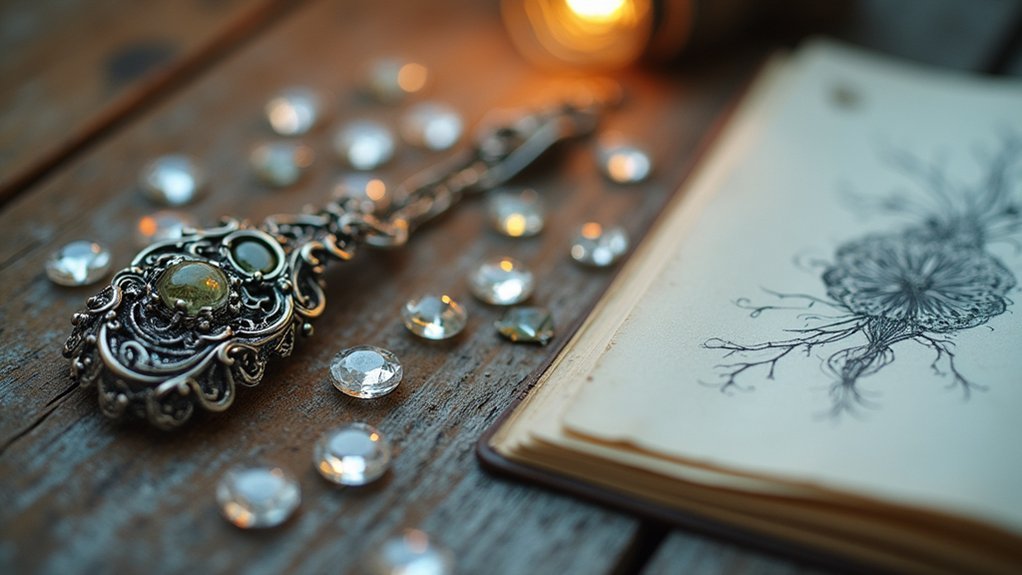

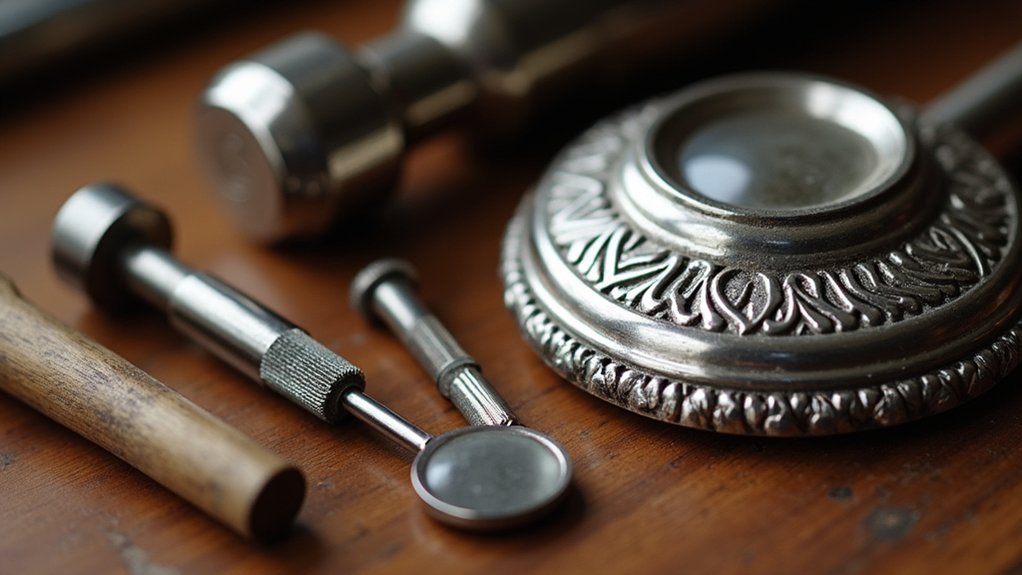

Leave a Reply